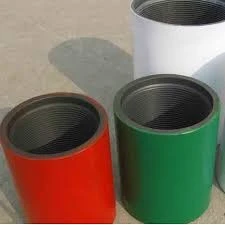- Afrikaans
- Albanian
- Amharic
- Arabic
- Armenian
- Azerbaijani
- Basque
- Belarusian
- Bengali
- Bosnian
- Bulgarian
- Catalan
- Cebuano
- Corsican
- Croatian
- Czech
- Danish
- Dutch
- English
- Esperanto
- Estonian
- Finnish
- French
- Frisian
- Galician
- Georgian
- German
- Greek
- Gujarati
- Haitian Creole
- hausa
- hawaiian
- Hebrew
- Hindi
- Miao
- Hungarian
- Icelandic
- igbo
- Indonesian
- irish
- Italian
- Japanese
- Javanese
- Kannada
- kazakh
- Khmer
- Rwandese
- Korean
- Kurdish
- Kyrgyz
- Lao
- Latin
- Latvian
- Lithuanian
- Luxembourgish
- Macedonian
- Malgashi
- Malay
- Malayalam
- Maltese
- Maori
- Marathi
- Mongolian
- Myanmar
- Nepali
- Norwegian
- Norwegian
- Occitan
- Pashto
- Persian
- Polish
- Portuguese
- Punjabi
- Romanian
- Russian
- Samoan
- Scottish Gaelic
- Serbian
- Sesotho
- Shona
- Sindhi
- Sinhala
- Slovak
- Slovenian
- Somali
- Spanish
- Sundanese
- Swahili
- Swedish
- Tagalog
- Tajik
- Tamil
- Tatar
- Telugu
- Thai
- Turkish
- Turkmen
- Ukrainian
- Urdu
- Uighur
- Uzbek
- Vietnamese
- Welsh
- Bantu
- Yiddish
- Yoruba
- Zulu
coupling tube fitting
Understanding Coupling Tube Fittings An Essential Component in Fluid Systems
Coupling tube fittings play a crucial role in various fluid handling systems, providing an efficient means of connecting and securing different sections of tubing. These fittings are essential in a wide range of industries, including automotive, aerospace, manufacturing, and chemical processing, where precise and leak-proof connections are paramount.
At their core, coupling tube fittings are designed to join two tubes or pipes together. They ensure a seamless transition between different sizes or types of tubing, allowing for flexibility in system design and functionality. Typically made from materials like stainless steel, brass, or plastic, coupling fittings offer excellent corrosion resistance and durability, making them suitable for high-pressure and high-temperature applications.
The design of coupling fittings can vary widely, including options such as compression fittings, quick-connect fittings, and push-to-connect fittings. Each type is engineered for specific application needs, with varying benefits. Compression fittings, for instance, are popular for their reliability and ease of installation, as they create a tight seal through a mechanical grip. Quick-connect fittings, on the other hand, facilitate fast and effortless connections and disconnections, which is particularly advantageous in dynamic fluid systems that require frequent maintenance or adjustment.
coupling tube fitting

A significant advantage of using coupling tube fittings is their ability to prevent leaks. Properly installed fittings ensure that the connection point remains secure under pressure, which is critical in preventing fluid loss and maintaining system efficiency. Additionally, leaking connections can lead to hazardous situations, particularly in applications involving toxic or flammable substances. Therefore, selecting the right type of coupling fitting is vital for safety and operational effectiveness.
When choosing coupling tube fittings, various factors must be considered, including the type of fluid being transported, temperature, pressure, and compatibility with existing materials. Furthermore, understanding the specific requirements of the application—such as the need for flexibility or permanence—can aid in selecting the most suitable fitting type.
In conclusion, coupling tube fittings are integral to the design and operation of fluid handling systems. Their ability to create secure, leak-proof connections enhances the overall performance and reliability of various applications. For engineers and technicians, a thorough understanding of these fittings and their appropriate use can significantly contribute to the efficiency and safety of fluid transport systems. Whether in the development of complex industrial machinery or everyday plumbing installations, coupling tube fittings remain indispensable components in modern engineering.
-
Tubing coupling plays a significant role in the chemical industryNewsApr.03,2025
-
The Importance of Tubing Crossover in Various Industrial FieldsNewsApr.03,2025
-
The characteristics and important role of Tubing Pup JointNewsApr.03,2025
-
Characteristics and functions of Pup jointNewsApr.03,2025
-
Characteristics and Functions of Pup Joint PipeNewsApr.03,2025
-
Application of Coupling Casing in Various ScenariosNewsApr.03,2025







